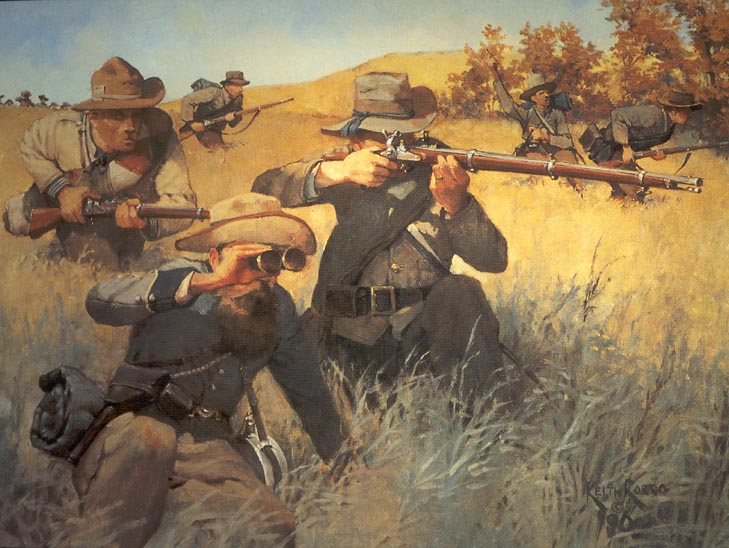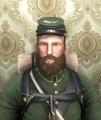TO ARMS! TO ARMS!
ALL YE BOYS OF THE SOUTH
JOIN NOW!
DEFEND YOUR RIGHTS AND HOME AGAINST THE YANKEE
INVADERS!
JOIN COMPANY A, 1st NORTH CAROLINA BATTALION SHARPSHOOTERS!
The 1st North Carolina Battalion Sharpshooters was organized at Gordonsville, Virginia, in May, 1862, with two companies from the 21st North Carolina Regiment. Its members were from Yadkin and Forsyth counties. During the war it was assigned to General Trimble's, Hoke's, and R.D. Johnston's Brigade. After fighting in Jackson's Valley Campaign as part of the 21st Regiment, the unit participated in all of the major conflicts of the Army of Northern Virginia from the Seven Days' Battles to the Appomattox campaign. In April of 1862, companies B and E were taken out of the 21st North Carolina to become Company A and Company B, 1st Battalion of North Carolina Sharpshooters. The men of Company A, 1st Battalion, under the command of Captain Nathan G. Hunt were some of the first skirmishers to be engaged at Sharpsburg (Antietam).[CENTER]
Battles:
1st Winchester May 25,1862
Cross Key's June 8,1862
Seven Day's June 25 - July 1,1862
Gaines Mill June 27,1862
Malvern Hill July 1,1862
Cedar Mt. August 7,1862
2nd Manassas August 28-30,1862
Harper's Ferry September 12-15,1862
Antietam September 17,1862
Fredericksburg December 13,1862
Chancellorsville May 1-4,1863
Gettysburg July 1-3,1863
Jack's Mt July 1863
Bachelor's Creek Bridge February 1,1864
Plymouth April 17-20,1864
Petersburg Siege June 1864 - April 1865
Hatcher's Run February 5-7,1865
Fort Stedman March 25,1865
Appomattox Court House April 9,1865
First Commander:
Major Rufus W. Wharton
Assignments:
Trimble’s Brigade Ewell's Division Dept of Northern Virginia
(April - May 1862)
Trimble’s Brigade Ewell's Division Valley District Dept of Northern Virginia
(May - June 1862)
Trimble-Hoke’s Brigade Ewell-Early's Division 2nd Corps Army of Northern Virginia
(June 1862 - January 1864)
Hoke's Brigade Dept of North Carolina
(January - May 1864)
2nd Military District Dept of North Carolina and Southern Virginia
(May - October 1864)
Johnson's Brigade Pegram's Division Valley District Dept of Northern Virginia
(October December 1864)
Johnson's Brigade Pegram's Division 2nd Corp Army of Northern Virginia
(December 1864 April 1865)
MARKSMEN WANTED!










 good luck!
good luck!






